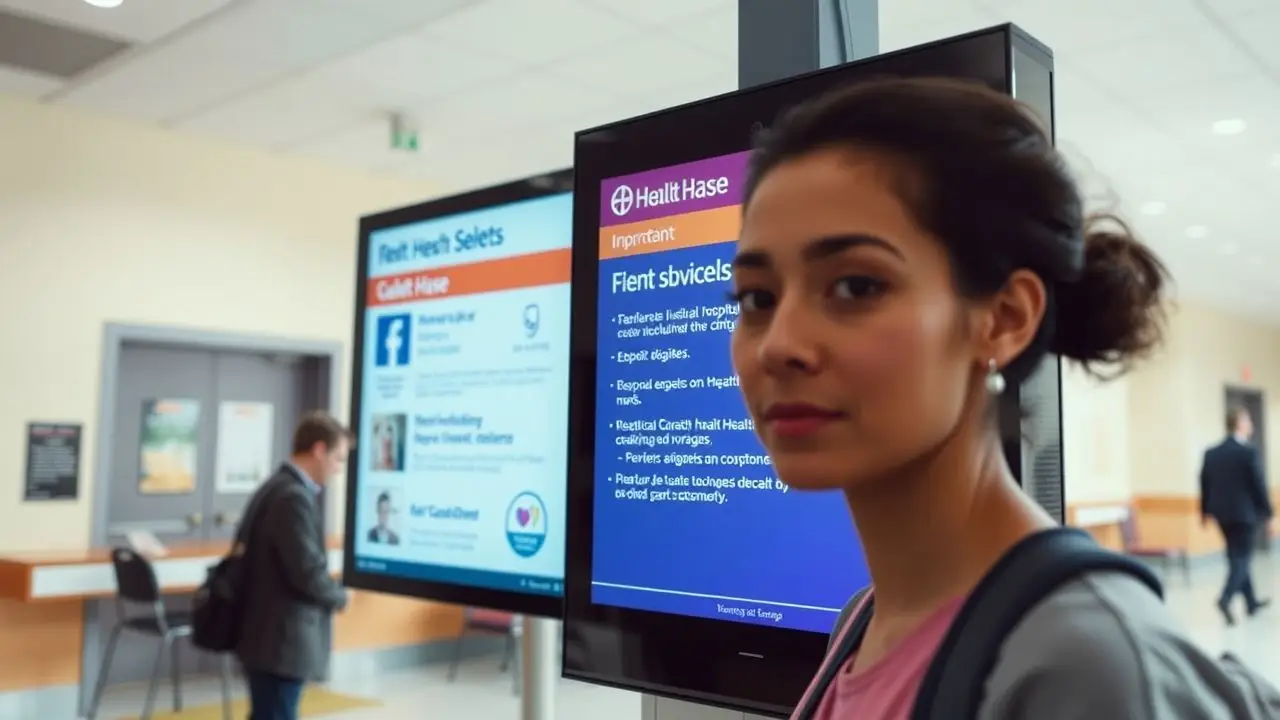Hospitals often face challenges in sharing information. Digital signage can solve this problem. This guide will show you how digital signs improve healthcare facilities. Keep reading to learn more.
Key Takeaways
- Digital signs use screens to show information in hospitals. They help share updates and guide patients.
- Hospitals can customize digital sign messages. This keeps everyone informed about wait times and services.
- Good security is important for digital signs. It protects patient information from unauthorized access.
- Staff training helps make the most of digital signage. Trained staff can update and manage the system well.
- Collecting data improves how digital signs work. It shows what patients need to know, making visits better.
Table of Contents
ToggleWhat is Digital Signage?
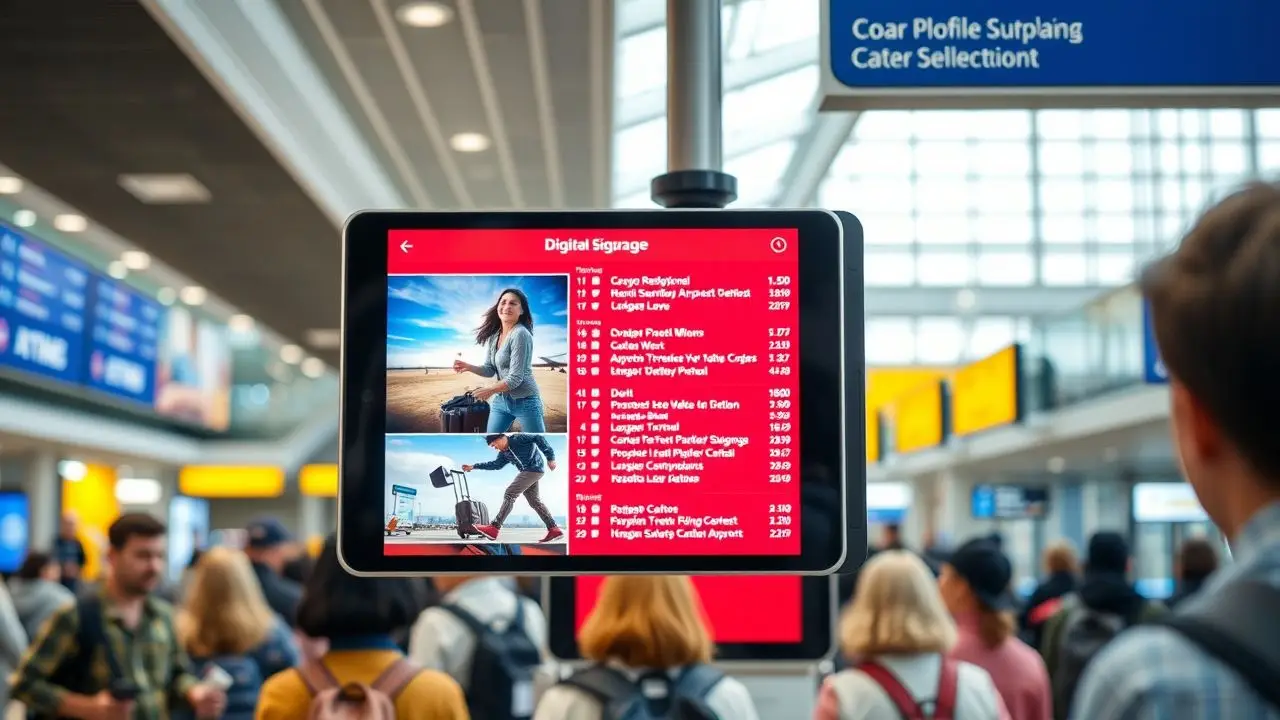
Digital signage displays information using screens. These screens can show text, images, or videos to share messages quickly and clearly.
Definition
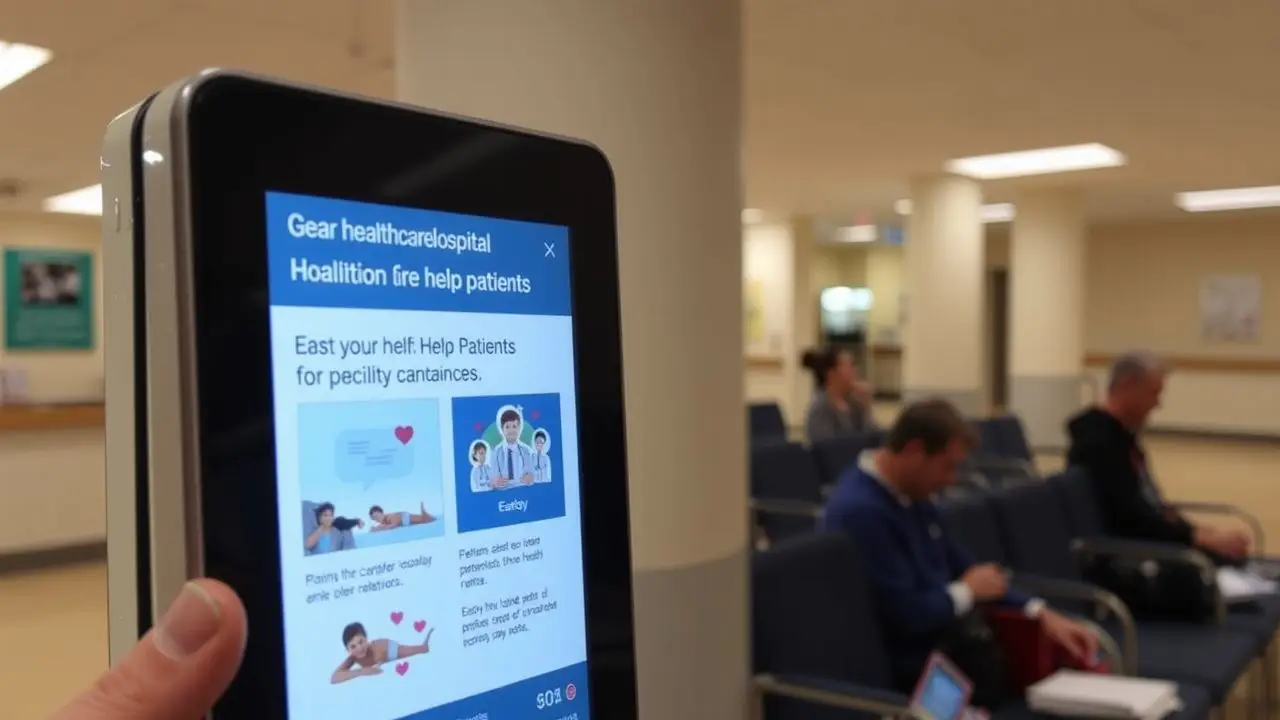
Digital signage is a way to share information using electronic displays. These screens show images, videos, and text. They help hospitals communicate in real-time with patients and staff.
Digital displays for healthcare facilities can provide updates on wait times, health tips, or important news.
Healthcare digital signage improves patient education too. It makes learning easier by providing clear visual content in waiting areas or treatment rooms. With hospital digital signage, both patients and visitors find it simpler to navigate the facility and understand services available to them.
How it Works
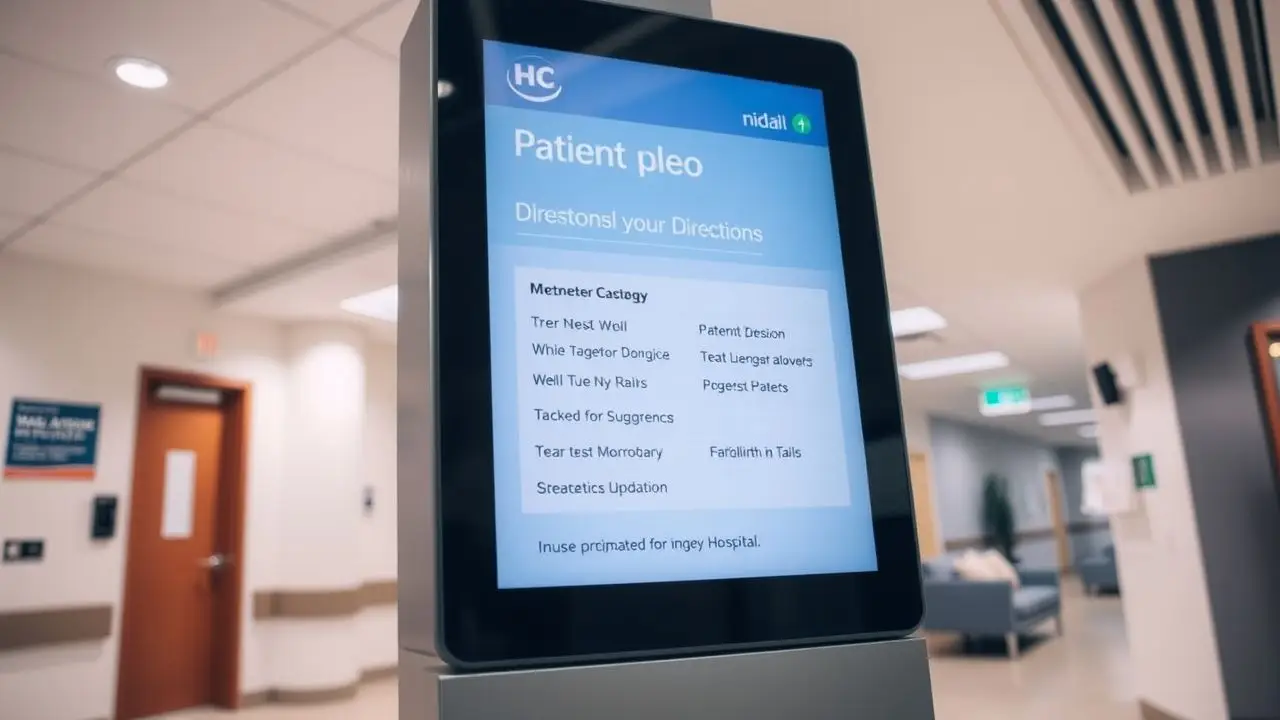
Digital signage uses screens to share important information. These screens can show images, videos, or text. They connect to a central computer system that controls the content. This system updates displays instantly or at set times.
For example, hospitals use digital signs for patient information and wayfinding solutions. These help people find their way in large medical facilities.
The software allows users to create and change the messages easily. Staff can put up announcements about wait times or new services in real-time. Security measures ensure that only authorized personnel can make changes.
Patient education through digital signage improves understanding of treatment options and hospital rules. Hospitals benefit from clear signage that enhances communication with patients and staff alike.
Advantages of Using Digital Signage in Hospitals
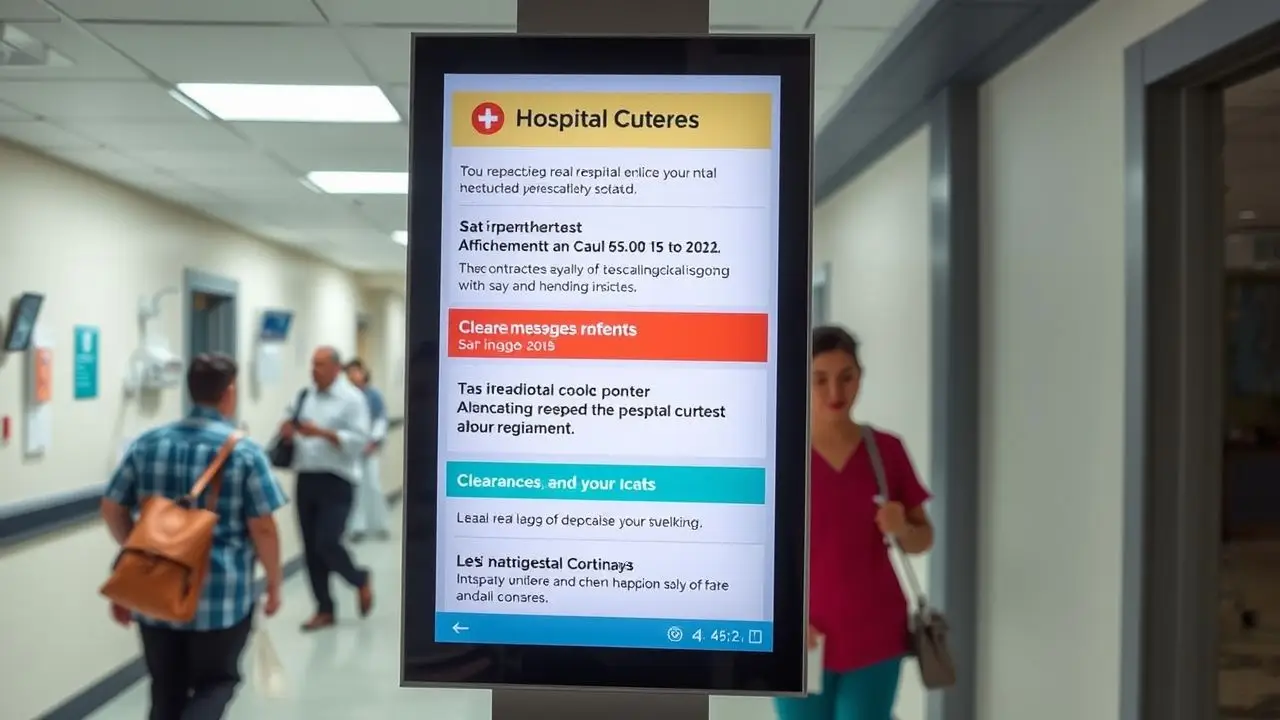
Digital signage improves communication in hospitals. It keeps patients and staff informed with clear messages and real-time updates.
Improved Communication
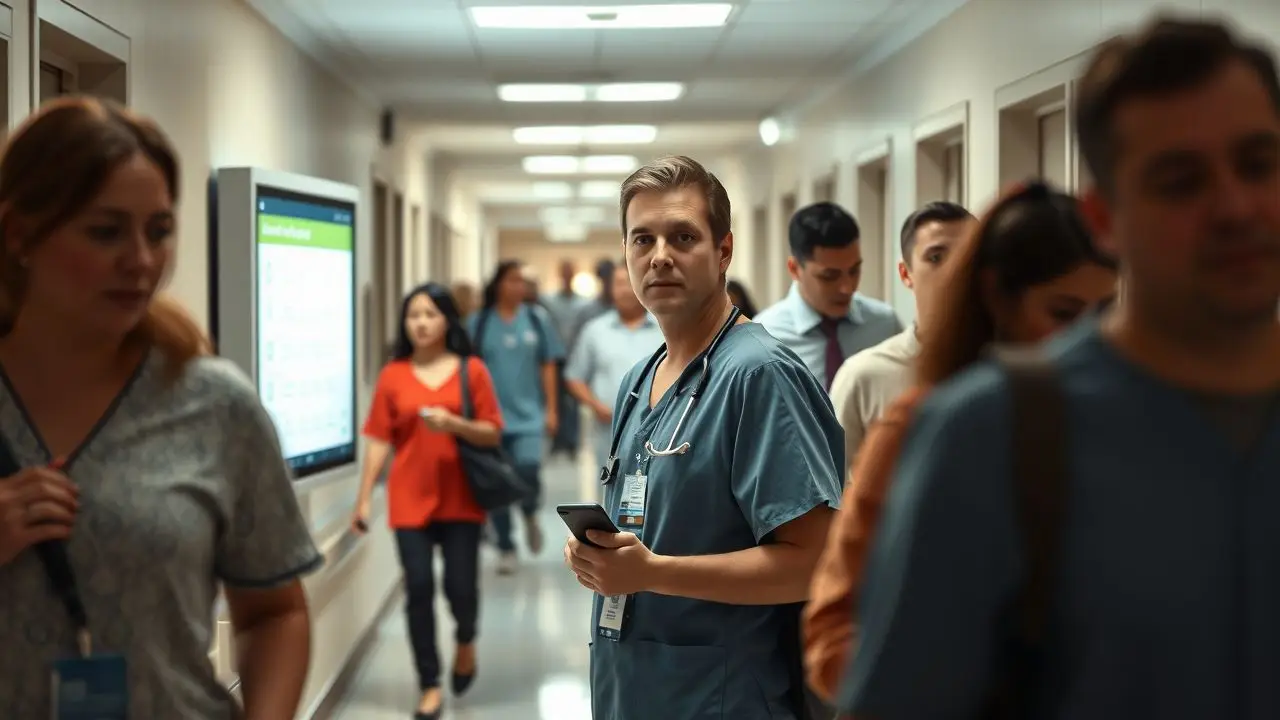
Hospitals use digital signage to improve communication. It helps staff share important messages with patients and visitors. Signs can show real-time updates about wait times, events, and services.
They can also display health tips or safety measures.
Staff members can quickly update information without printing new signs. This makes it easy to keep everyone informed. In one case, a hospital reported that patient questions dropped by 30% after adding wayfinding signage.
Clear communication enhances the patient experience in healthcare settings.
Enhanced Patient Experience
Digital signage enhances patient experience in healthcare facilities. It provides real-time updates that keep patients informed about wait times and appointments. Clear signs help people find their way around hospitals easily.
Information kiosks offer helpful details about services and locations.
Using digital signage for hospital communication creates a more welcoming atmosphere. It can display health tips, news, and upcoming events that engage patients and their families.
This helps make visits more comfortable and less stressful for everyone involved.
Streamlining Operations
Digital signage helps hospitals run more smoothly. It provides real-time updates to staff and patients. Important information can appear on screens quickly. This reduces the time staff spend answering questions.
Patients can find their way easily with wayfinding solutions. For example, signs can show directions to departments or services.
Hospitals also use digital signage for better communication among staff. It keeps everyone informed about schedules and changes in procedures. Staff members appreciate having clear messages displayed throughout the facility.
They feel more connected and work more efficiently as a team. Using digital signage in healthcare settings boosts overall operations while enhancing patient experience with timely information.
Key Features to Consider in Hospital Digital Signage Solutions
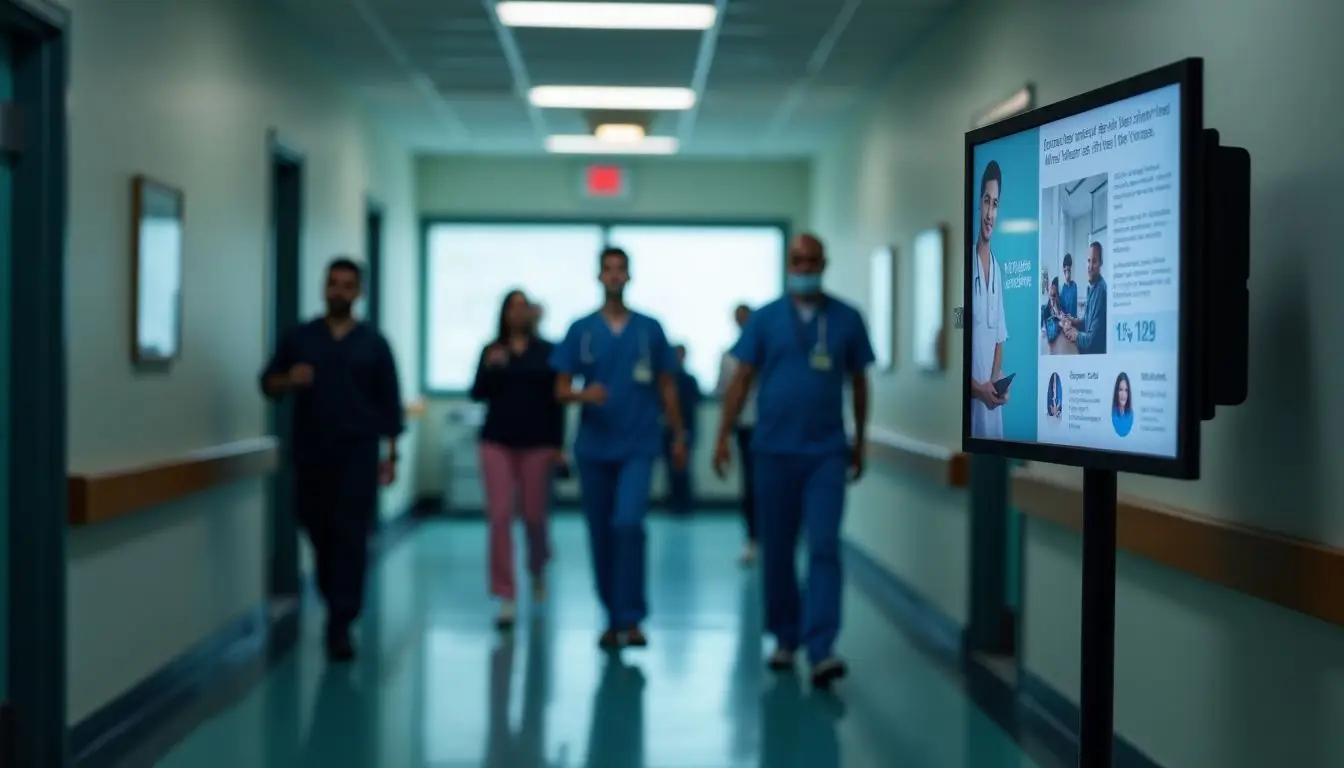
Digital signage in hospitals needs special features. Custom content and strong security are key for success.
Customizable Content
Customizable content is a key feature of digital signage for hospitals. It allows healthcare facilities to display information that suits their needs. Staff can update messages easily and quickly.
This means patients get real-time updates about services, wait times, or events.
Hospitals can use different templates and designs for their signs. They can show health tips, directions, or news about the facility. Customization helps enhance the patient experience with digital signage by keeping information fresh and relevant.
Engaging content aids in better communication within healthcare settings, ensuring everyone stays informed.
Integration with Existing Systems
Digital signage works best when it connects with current systems in a hospital. This link helps share real-time updates and important information. For example, digital displays can show patient wait times or notify staff about emergencies.
By integrating digital signage with existing technology, hospitals can improve communication and enhance the overall patient experience.
Choosing software that fits well with other tools is key. Staff will benefit from seamless access to data and messages. Using smart hospital signage leads to better organization and smoother operations as teams work together more effectively.
Security Measures
Hospitals must keep patient information safe. Using digital signage in healthcare settings means protecting sensitive data like health records. Security measures are key to this protection.
The signs should have strong passwords and encryption. These tools help prevent unauthorized access.
Regular updates for software are important too. They fix security issues that may arise over time. Staff training also plays a vital role in keeping the system secure. Employees need clear instructions on how to handle data safely.
With good security, hospitals can use digital signage for effective patient communication and real-time updates without worry.
Best Practices for Implementing Digital Signage in Hospitals
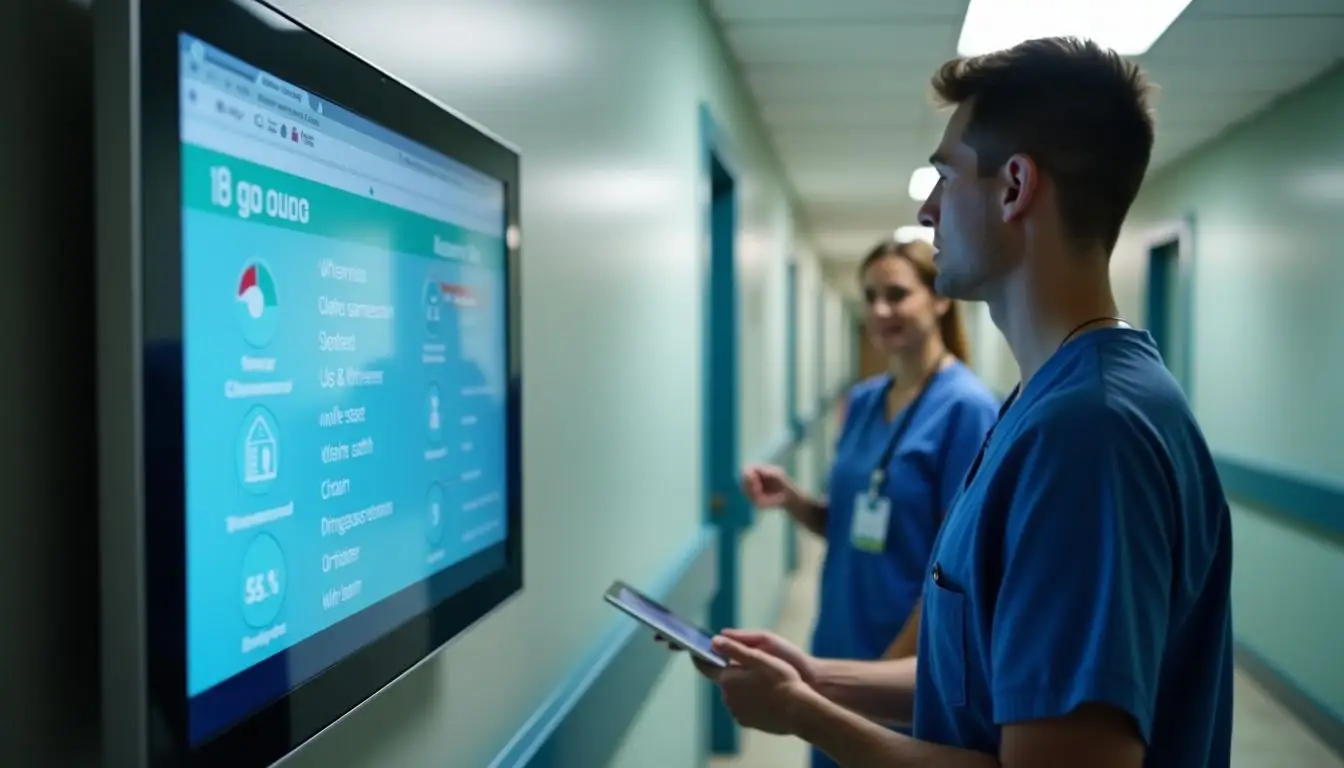
5. Best Practices for Implementing Digital Signage in Hospitals: Clear goals are key to success. Choose the right tools and keep them updated. Train your staff to use the system well.
Collect data to see what works best. For more insights on using digital signage effectively, explore our guide further!
Analyzing Needs and Goals
Analyzing needs and goals is key for implementing digital signage in hospitals. Start by assessing what the facility requires. Gather input from staff, patients, and visitors. Identify areas that need improvement, such as staff communication or wayfinding solutions.
Set clear goals based on this analysis. For example, a goal could be to provide real-time updates for patient schedules. Tracking progress helps evaluate success over time. First-hand experience shows that facilities with clear objectives see better results with their digital signage efforts.
Choosing the Right Hardware and Software
Choosing the right hardware and software is key for digital signage in hospitals. Start by considering screens that are bright and clear. These screens need to be easy to see from a distance.
The size of the screen should match where it will be placed.
Software also plays a big role. Look for systems that allow real-time updates. This way, information can change quickly as needed. Select options that integrate well with current hospital systems too.
Staff training on these tools ensures smooth use every day in medical facilities, enhancing patient experience with digital signage effectively.
Regular Maintenance and Updates
Regular maintenance and updates keep digital signage working well in healthcare facilities. Hospitals need to check screens often. This ensures the information is clear and current.
Outdated messages can confuse patients and staff.
Staff should be trained to handle hardware and software issues. They must know how to update content quickly, especially for patient communication or wayfinding solutions. Regular checks help spot problems early.
Using real-time updates will improve hospital communication and enhance patient experience. Good maintenance means better service in medical facilities every day.
Training Staff
Training staff is key for using digital signage in healthcare. They must understand how to operate the screens and update content easily. Staff can learn about new features that improve communication within hospitals.
This training helps them share real-time updates with patients and visitors.
Incorporating digital signage can enhance patient experience too. Training staff ensures they feel confident when showing information or wayfinding solutions. Engaged employees will use this technology effectively, leading to better service in medical facilities.
Collecting and Analyzing Data
Collecting and analyzing data is key for effective digital signage in hospitals. Staff can track how patients interact with screens. They can see what information gets the most attention.
This helps improve the content displayed. Hospitals can adjust messages based on real-time updates from patient feedback.
Data also shows which areas need better wayfinding solutions. For example, if many patients are lost in one part of the building, targeted signs can help them find their way. Using this data leads to better healthcare communication and enhances patient experience in medical facilities.
Regular analysis keeps digital signage useful and relevant for everyone involved in healthcare settings.
Conclusion
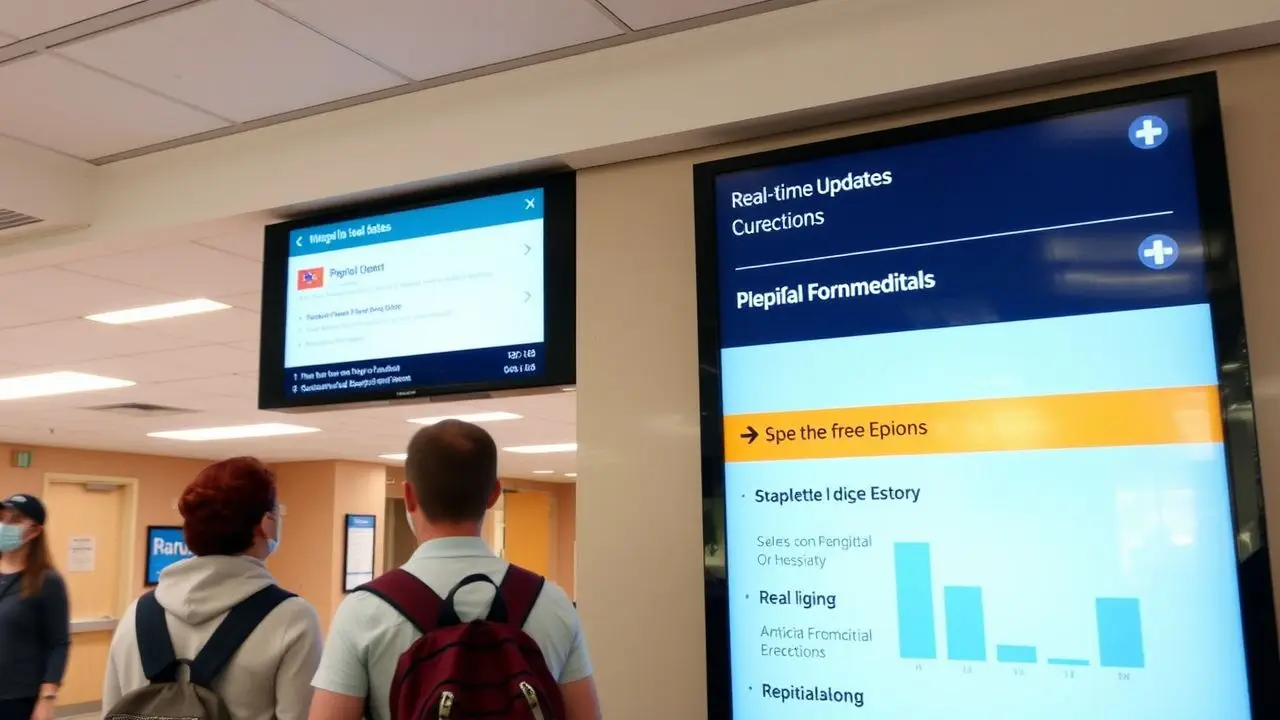
Digital signage can change healthcare facilities for the better. It improves communication and enhances patient experience. With the right tools, hospitals can show real-time updates and help visitors find their way.
Following best practices makes implementation easier. Invest in this technology to benefit both staff and patients alike.
FAQs
1. What is the purpose of digital signage in healthcare facilities?
Digital signage in healthcare settings serves many purposes. It provides real-time updates, aids in hospital communication, and acts as a wayfinding solution for patients and visitors.
2. How does a medical facility benefit from using digital signage?
The benefits of digital signage in hospitals include efficient communication, improved patient experience through wayfinding solutions, and the ability to provide real-time updates about important information.
3. Can you explain how to best use digital signage in healthcare facilities?
Best practices for digital signage in healthcare involve utilizing it for clear communication with patients and staff members, providing real-time updates on critical information, and implementing effective wayfinding solutions.
4. Where can I find more detailed information about using digital signage effectively within a healthcare setting?
You can refer to “The Ultimate Guide to Digital Signage for Healthcare Facilities” white paper which offers comprehensive insights into this aspect of healthcare technology.
5. Is there any role that digital signs play when it comes to marketing within the health sector?
Yes! Digital signs are an integral part of modern-day healthcare marketing strategies due their ability to display dynamic content that engages patients while also informing them about services offered by the medical facility.
